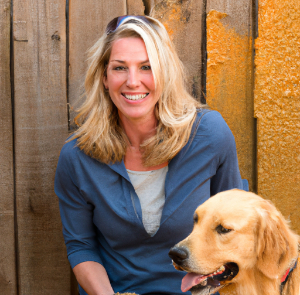
The many dog breeds we see today have been developed through selective breeding programs. In order to develop dogs suitable for specific purposes, breeders found it necessary to breed for certain characteristics and these sometimes included deformities, defects, and mutations.
Examples of these include the Dachshund and the Basset Hound with their long spinal columns and short legs, the Bulldogs, Boxers, and Pugs with their pushed in faces, and the German Shepherd with its low-slung hips.
The German word, “dachshund” means badger dog. These chondrodystrophic weenie dogs were originally bred for their ability to easily crawl into badger holes. But today, according to veterinarian Patricia Luttgen of Denver, Colorado, about one in four Dachshunds develops some form of painful and/or paralyzing disc disease in its lifetime, due to its inherited skeletal disorder.
Bulldogs were originally bred for the purpose of latching on to the nose of a wayward bull. The wide pushed-in face that was an advantage for this job has resulted in many problems for brachycephalic breeds. The short muzzle does not afford enough room for all the tissues which pushes the soft palette into the back of the throat, resulting in snoring and snorting sounds. This can develop into serious breathing difficulties, higher risk of heat stroke due to inability to pant sufficiently and dissipate heat, greater anesthesia risk, and other problems.
The head of the Bulldog breed has also increased in size over time and most Bulldogs must now be delivered by Cesarean section.
That cute bug-eyed look of the brachycephalic Pug is due to shallow eye sockets and the slightest pressure can cause an eyeball to pop out, requiring surgical replacement. Many brachycephalic breeds such as the Pekingese eventually lose one or both eyes.
German Shepherds and Labrador Retrievers are often plagued with hip dysplasia and other painful skeletal diseases that can be traced to genetics. According to landofpuregold.com, a recent study indicates that 63% of Golden Retrievers die of cancer.
Veterinary Neurologist, Dr. Claire Rusbridge, claims that as many as half of Cavalier King Charles Spaniels suffer from heart murmurs and Syringomyelia, a painful condition which occurs as a result of the skull being too small to accommodate the brain.
According to swissinfo.com, hairless dogs can trace their ancestry back to just one hairless dog more than 3000 years ago. In hairless breeds such as the Chinese Crested, the gene responsible for its hairlessness is also responsible for its defective teeth.
Today, purebred dogs are bred with others of the same breed to meet certain breed standards set by kennel clubs and breed clubs. This practice, long term, can shrink the gene pool and sometimes dogs of the same lineage are inbred to magnify certain traits, thus perpetuating genetic disease in many breeds.
the results of an RSPCA scientific report concluded that society has come to accept these “anatomically deformed dogs” but that "exaggerated physical features and inherited diseases cause serious welfare problems in pedigree dogs."
Controversy has arisen over dogs being bred for extreme deformities resulting in pain and suffering but purebred dog advocates argue that the pedigreed dog is predictable and the dog owner who buys a purebred knows what he is getting concerning size, type of coat, temperament, etc. Although variances do occur among purebreds, these pedigreed dogs provide the option of choosing a dog to suit the owner’s lifestyle and interests. Purebred dogs, as well as mixed breeds, can also make wonderful pets.
According to The Doctor’s Scoop page at lovingtonveterinaryclinic.com of Lovington, New Mexico, “Almost every purebred has a higher risk for a certain illness, deformity, immune condition, or cancer. A purebred is born by repetitively breeding for certain desired deformities such as a pug nose, short legs, a deep chest, etc.”
The Doctor’s Scoop goes on to say that the mutt’s genetic mix is “new and less likely to pass on breed-related illness” and “that mixed breed is probably going to have a much healthier existence and fewer veterinary costs over its lifespan.”
